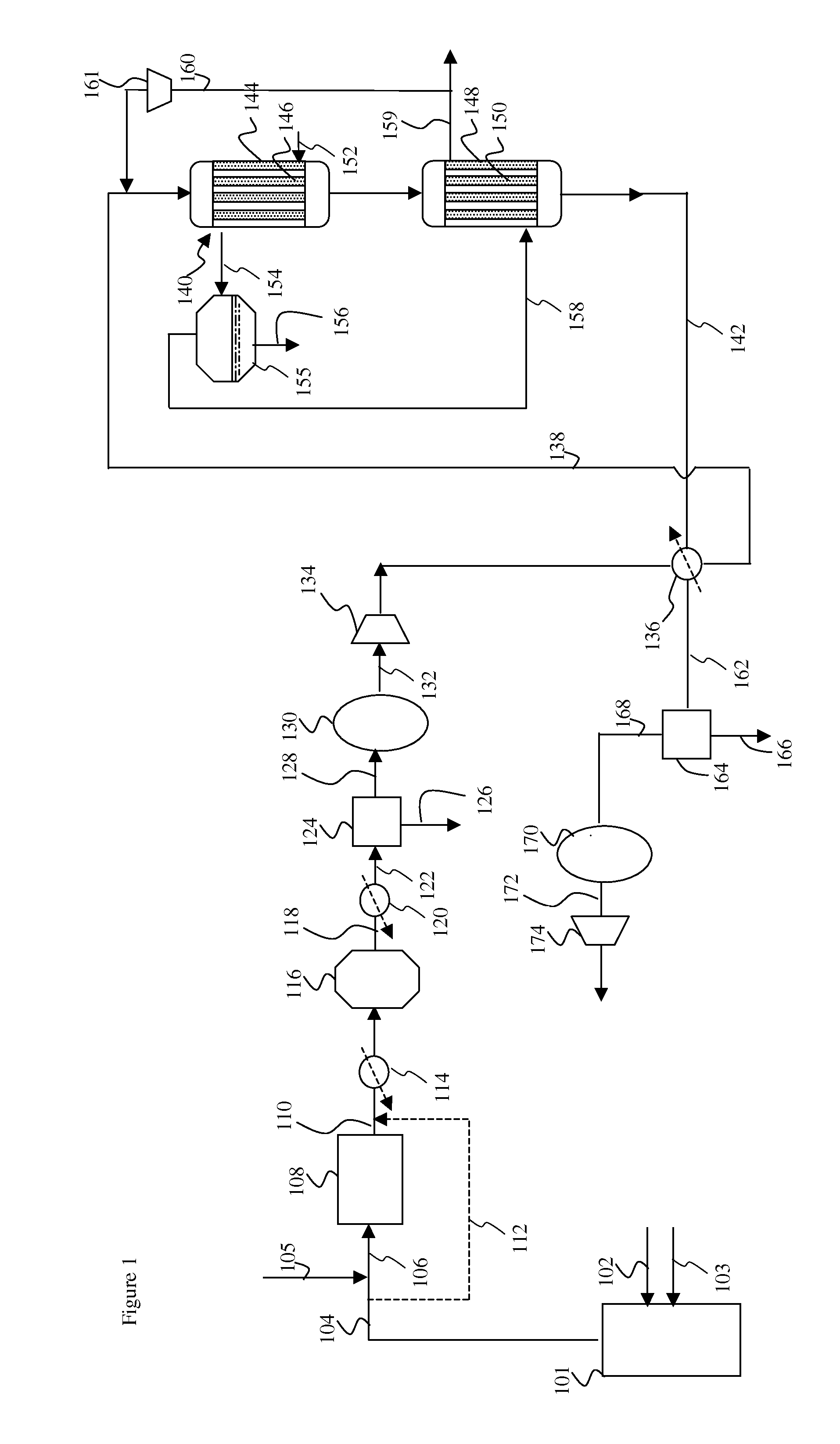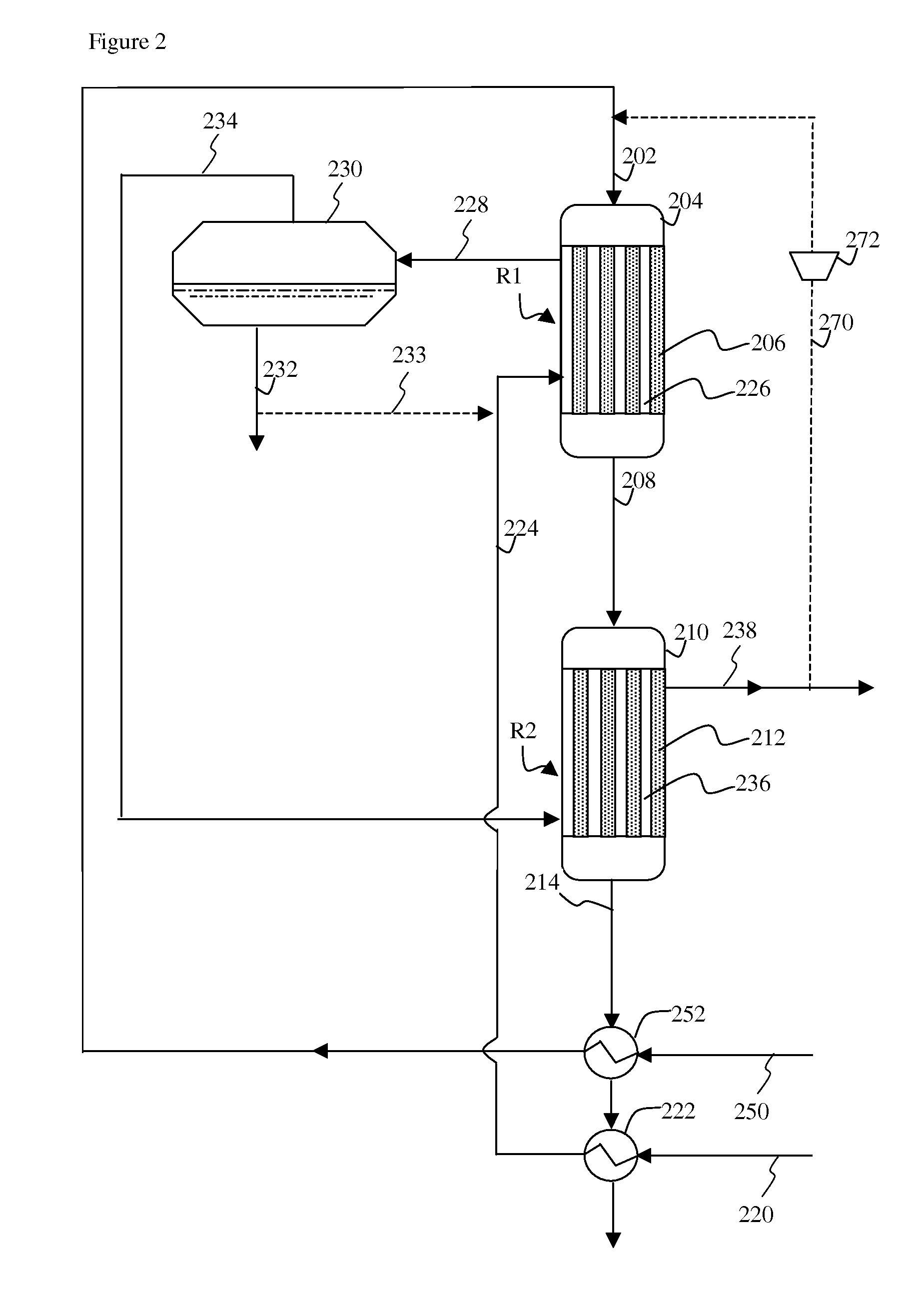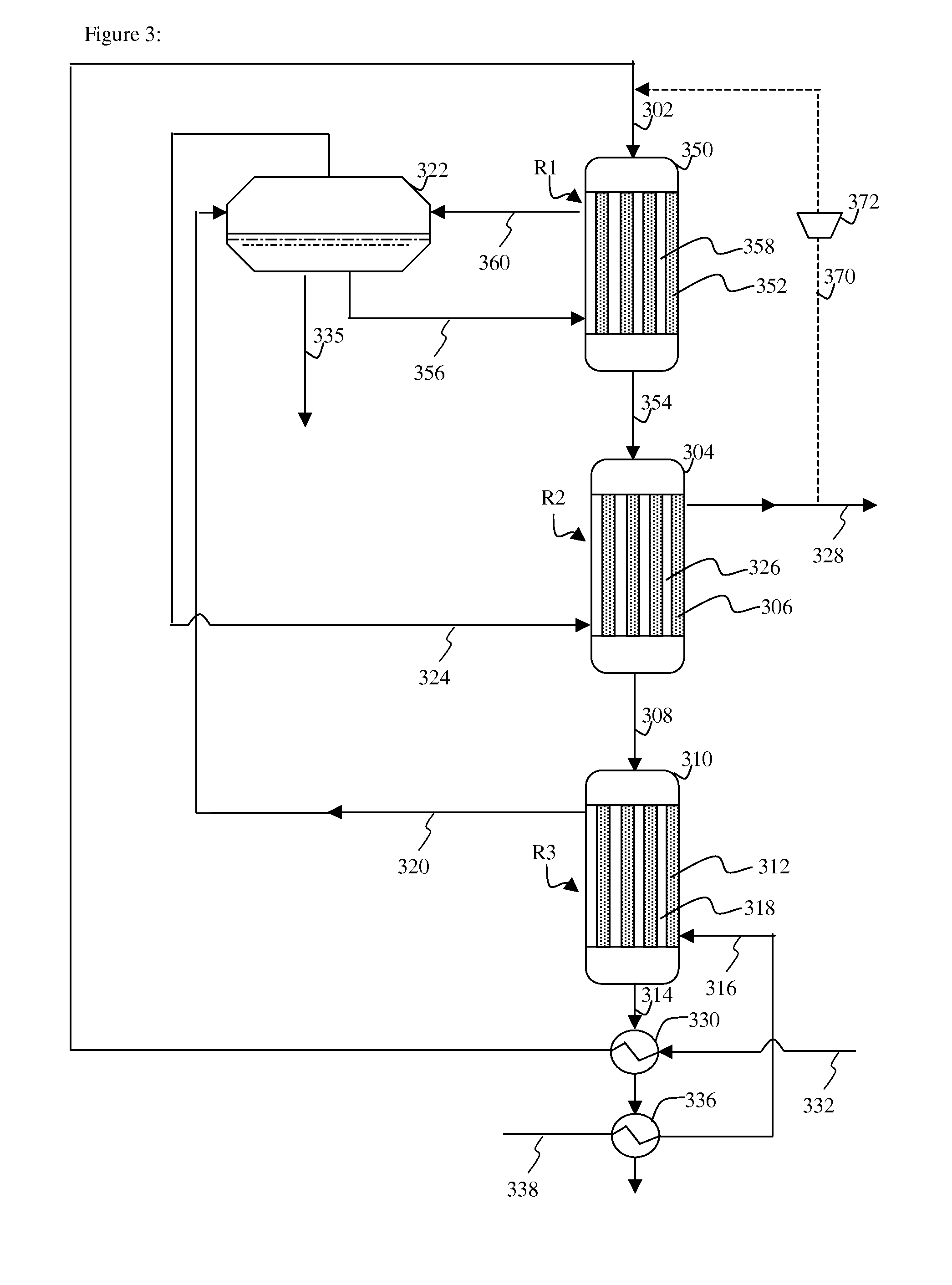Process for the co-production of superheated steam and methane
a technology of superheated steam and methane, which is applied in the preparation of hydrocarbon preparation catalysts, water, oxygen-containing compounds, etc., can solve the problems of increasing the cost of the tube system even further, the hot spot walls may require insulation, and the construction material of the methanation region is expensive, so as to achieve the effect of reducing the temperature of the metal of the tube walls, reducing the cost of the construction material of the methanation region, and reducing the cost of construction
- Summary
- Abstract
- Description
- Claims
- Application Information
AI Technical Summary
Benefits of technology
Problems solved by technology
Method used
Image
Examples
Embodiment Construction
[0024]Without wishing to be bound to any kind of theory, it is believed that by cooling the first methanation region, where the temperature of the catalyst and feed may be highest, with water that is still to be vaporized, a more efficient cooling can be achieved. The water, that is still to be vaporized, is capable of absorbing more heat than steam that is being superheated. As a result the overall metal temperature in the first methanation region can be lower and less expensive material is needed for construction of the first methanation region. In the second methanation region, the temperature of the catalyst and feed may be lower and less cooling is required. The overall metal temperature in the second methanation region can avoid the use of special material for the tube walls.
[0025]The gas containing carbon monoxide and hydrogen, may be any gas comprising carbon monoxide and hydrogen. An example of a gas comprising carbon monoxide and hydrogen is synthesis gas. Herein synthesis...
PUM
| Property | Measurement | Unit |
|---|---|---|
| temperature | aaaaa | aaaaa |
| temperature | aaaaa | aaaaa |
| temperature | aaaaa | aaaaa |
Abstract
Description
Claims
Application Information
 Login to View More
Login to View More - R&D
- Intellectual Property
- Life Sciences
- Materials
- Tech Scout
- Unparalleled Data Quality
- Higher Quality Content
- 60% Fewer Hallucinations
Browse by: Latest US Patents, China's latest patents, Technical Efficacy Thesaurus, Application Domain, Technology Topic, Popular Technical Reports.
© 2025 PatSnap. All rights reserved.Legal|Privacy policy|Modern Slavery Act Transparency Statement|Sitemap|About US| Contact US: help@patsnap.com



